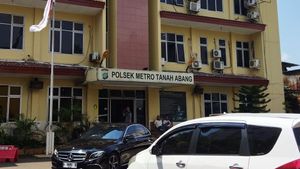JAKARTA - PT PGN LNG which is a subsidiary of PT Perusahaan Gas Negara Tbk (PGN) operates the Floating LNG Terminal Facility /Floating Storage & Regasification Unit in Lampung as an integrated natural gas infrastructure for gas supply to the Jakarta and West Java areas. FSRU Lampung is connected to a 24-inch diameter underwater pipe as far as 21 Km to the Onshore Receiving Facility (ORF) in Lampung.
The ORF system is connected to the SSWJ (South Sumatra-West Java) transmission network at Labuhan Maringai station and Lampung offtake station. LNG regasification gas at FSRU Lampung can be channeled to the distribution of West Java and Lampung areas.
With the infrastructure integration system, gas distribution from the Lampung LNG terminal facility to customers can be done for consumers in an integrated distribution network with the SSWJ transmission network or which is directly connected to the ORF facility. In this case, West Java and Jakarta have been integrated. The current gas absorption is quite high 500 to 550 BBTUD and is widely used by industry and commercial as economic drivers, so FSRU has an important role," explained PGN's Director of Strategy and Business Development Harry Budi Sidharta, in his statement, quoted on Sunday, July 30.
Regasification facilities are needed to create security supply including flexibility, supply reliability, and supply continuity. Merchant Business Model provides flexibility for the reliability of supply not only to rely on pipeline gas supply. So PGN's natural gas supply can come from various supply sources, namely pipe gas and LNG.
FSRU Lampung contributes to reliability and supply continuity. The regasification facility also functions as a supply point, in the event of a spike in gas demand or if there is a decrease in the source of pipeline gas supply in the short and long term.
In some conditions when there is a disruption in piped gas supply, LNG gas can be used to meet natural gas needs in West Java and Jakarta. This is part of PGN's commitment to provide service guarantees to customers without breaking up.
PGN adopts the Merchant Business Model in operating the Lampung FSRU. With this business model, PGN builds and operates the terminal by receiving LNG gas from suppliers using LNG Carrier, stores (Storage) and regasing it to be distributed to final users through a Gas Sales Agreement (GSA) contract or Terminal Use Agreement (TUA).
SEE ALSO:
Supply from FSRU Lampung is also important for gas distribution to power plants. In this case, PLN optimizes gas distribution from LNG FSRU Lampung through the Usage Agreement Terminal (TUA) scheme.
"With the business model merchants, it also adds value creation, because PGN does not apply the quota to natural gas barriers in West Java so that natural gas distribution services to customers are not disrupted and this is one of the keys to satisfaction of natural gas customers from PGN," explained Harry.
PGN has the principle that FSRU Lampung is one of the integrated natural gas infrastructure assets that is maximized to support natural gas distribution in West Java and Jakarta.
The English, Chinese, Japanese, Arabic, and French versions are automatically generated by the AI. So there may still be inaccuracies in translating, please always see Indonesian as our main language. (system supported by DigitalSiber.id)
















